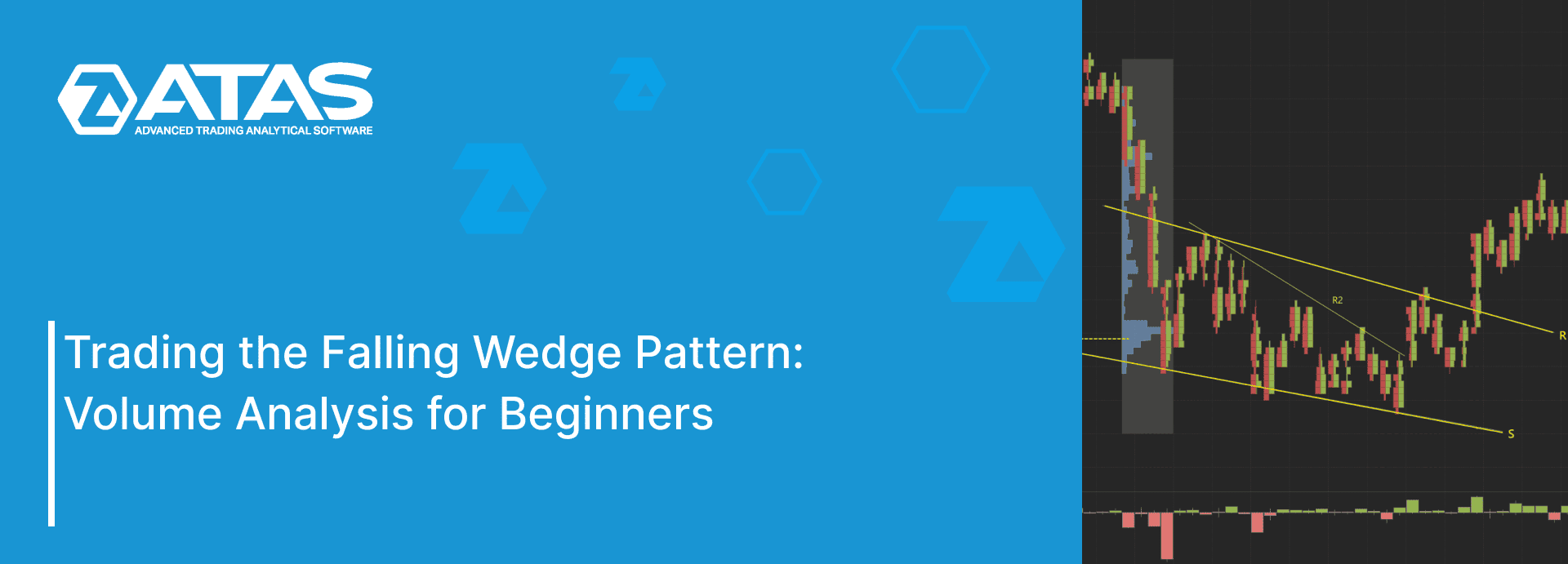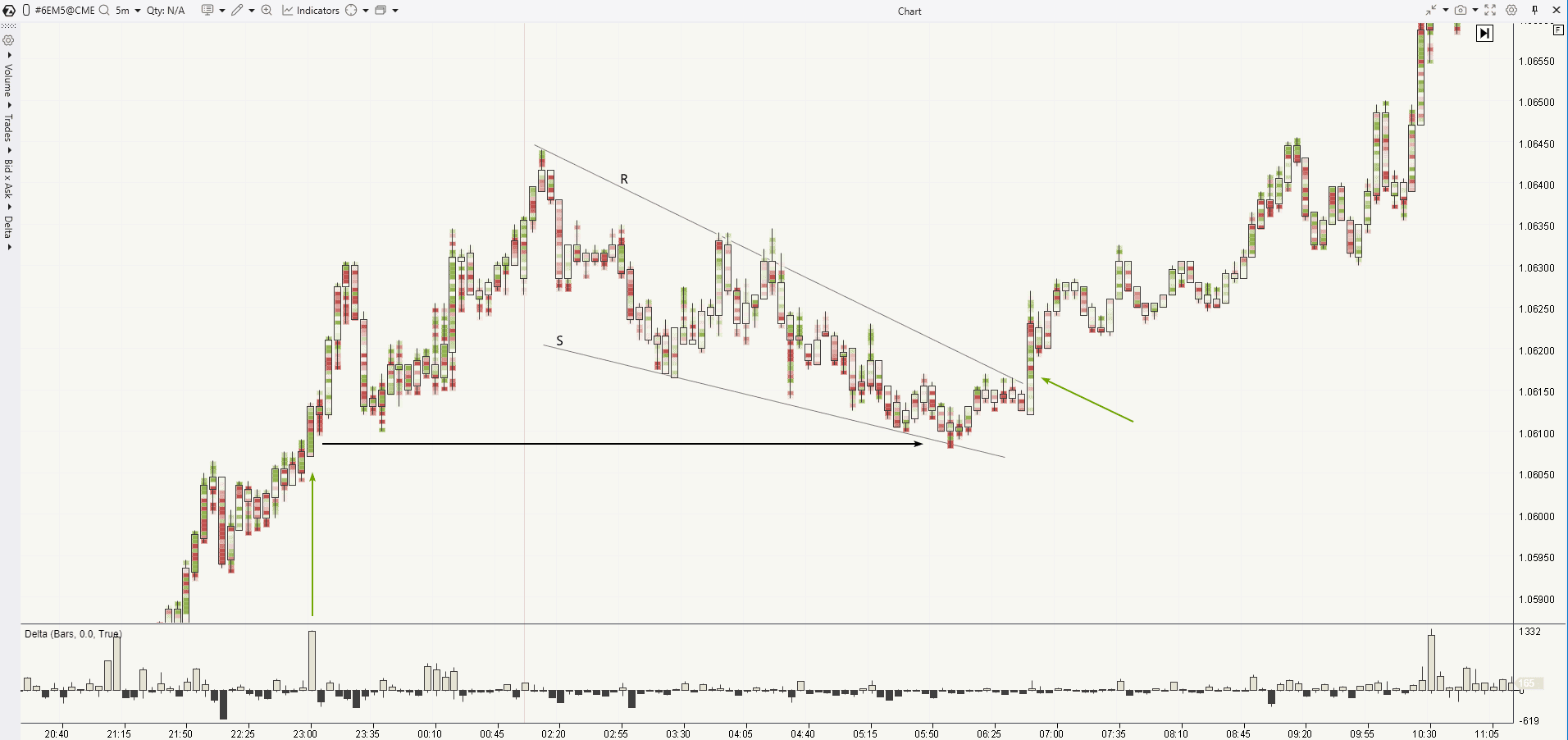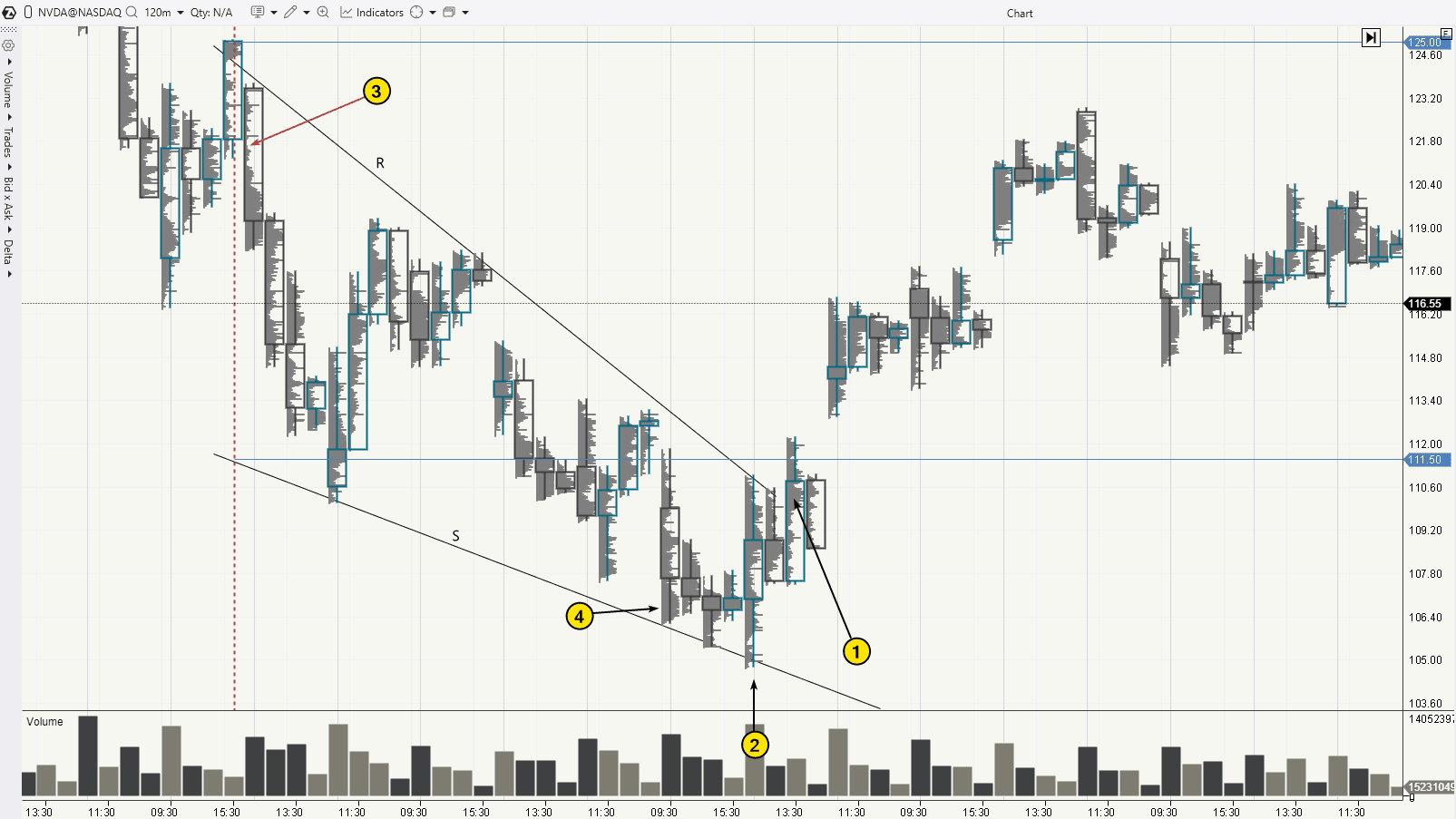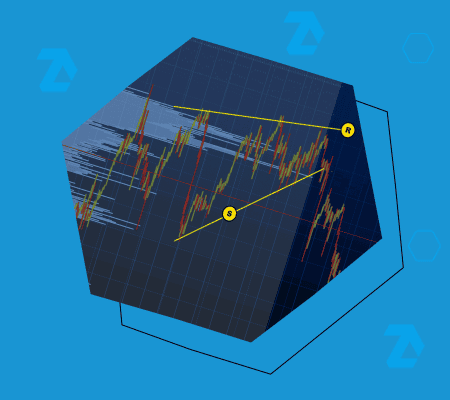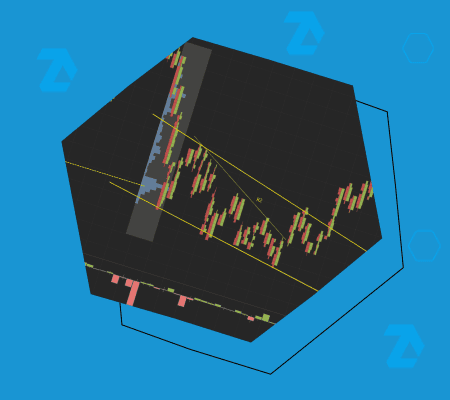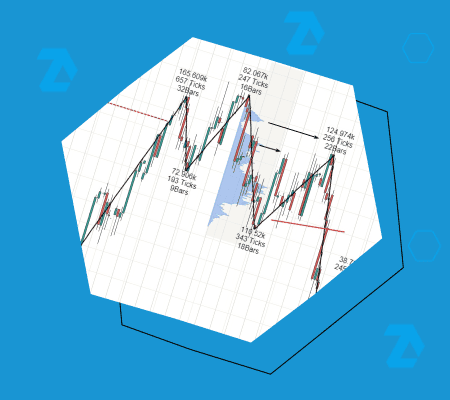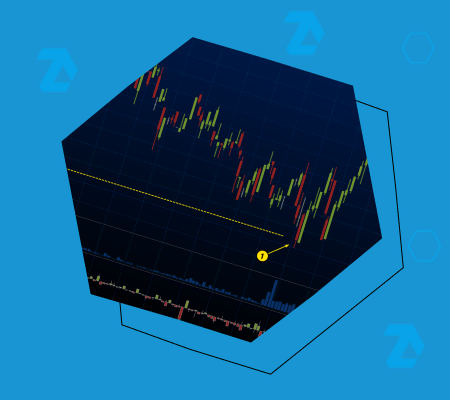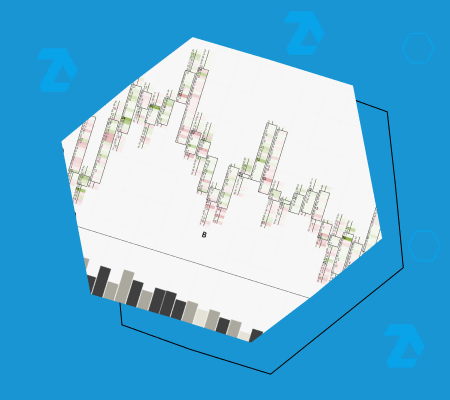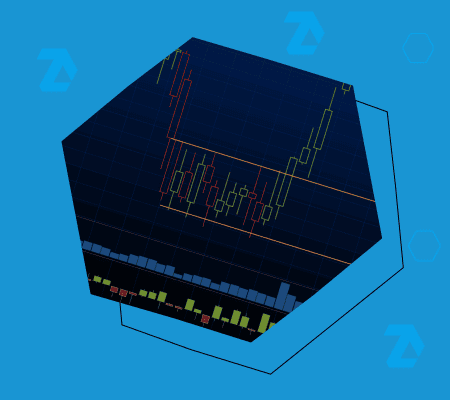What is a falling wedge in trading, and what does it mean?
The falling wedge is a chart pattern that forms when the price declines with a narrowing range of fluctuations. These fluctuations are bounded by converging lines (support and resistance) that slope downward, visually resembling a wedge. According to classical technical analysis, this pattern, appearing after a period of declining prices, suggests a potential reversal to an upward trend. However, in practice, this scenario requires solid confirmation, as it involves taking long positions against a bearish trend.
How to trade the falling wedge?
Like other chart pattern breakouts, wait for the price to close outside the pattern and open a position in the direction of the expected trend (alternatively, you can wait longer to enter on a test of the breakout level).
Useful information on the topic:
What are the best time frames and markets for trading the falling wedge?
The falling wedge is a versatile chart pattern that can be traded on any market and time frame. It is often thought to be more reliable on higher time frames (such as 1-hour, 4-hour, or even daily charts), but this is not always the case. The effectiveness of trading the falling wedge depends more on the trader’s expertise and the tools they use, rather than the specific market choice.
Is the falling wedge a bullish or bearish pattern?
By default, the falling wedge is considered a bullish reversal pattern. However, the converging downward lines can appear in different contexts. For example, when a falling wedge forms in a bearish market, a steeper angle of the resistance line may indicate selling pressure, suggesting that the downtrend could continue. In this case, the falling wedge acts as a bearish continuation pattern.
What is the difference between a falling wedge and a rising wedge?
These patterns are mirror images of each other. For more details, see the article about the rising wedge.

